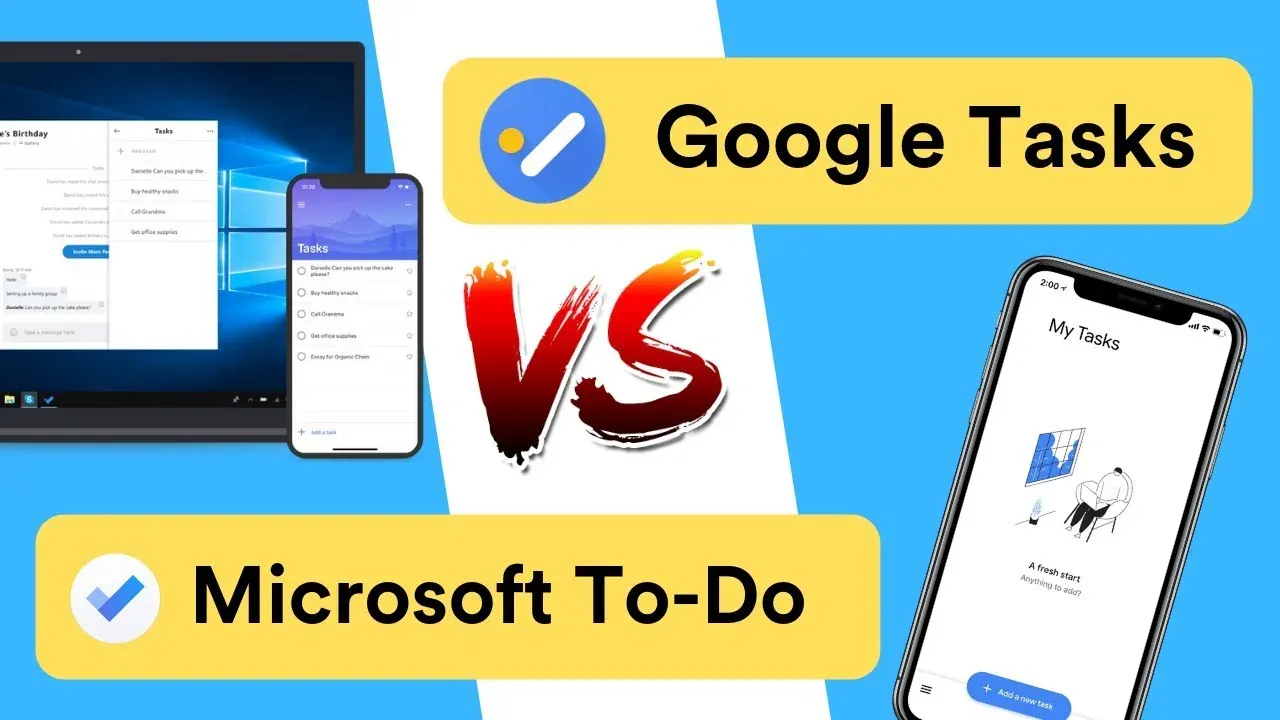

In today’s digital age, note-taking and task management apps have become essential tools for staying organized and productive. Let’s learn more about this topic below with Word Search as we dive deep into comparing two popular productivity apps: Google Keep and Microsoft To Do.
Google Keep presents a colorful, card-based interface that feels immediately welcoming and intuitive. The moment you launch the app, you’re greeted with a clean canvas that encourages quick note-taking and idea capture. The design philosophy clearly emphasizes simplicity and ease of use, with a familiar Google aesthetic that most users will find comfortable.
Microsoft To Do, on the other hand, offers a more structured and traditional task management interface. The app opens to your “My Day” view, which helps focus on immediate priorities. The design is minimal yet sophisticated, with a pleasant blue-and-white color scheme that feels professional and purposeful. The transition effects and animations are smooth, creating a polished user experience.
Read more: Notion Review: Is It the Best All-in-One Workspace App?
Google Keep shines in its ability to handle various types of notes. You can quickly jot down text notes, create checklists, record voice notes that automatically transcribe, and add images with OCR capabilities. The color-coding system helps organize notes visually, while labels provide another layer of organization. The app’s strength lies in its flexibility and speed – you can capture ideas as quickly as they come.
Microsoft To Do excels in task management and planning. The app offers robust features like due dates, reminders, sub-tasks, and recurring tasks. The “My Day” feature helps users plan their daily priorities, while the “Important” and “Planned” smart lists automatically organize tasks based on their attributes. The ability to create multiple lists and share them with others makes it excellent for both personal and professional use.
Google Keep seamlessly integrates with other Google services, particularly Google Docs and Calendar. Notes can be easily exported to Google Docs for more detailed editing, and reminders sync with Google Calendar. The app works flawlessly across devices, with real-time synchronization ensuring your notes are always up to date whether you’re using the web interface, mobile app, or browser extension.
Microsoft To Do’s integration with the Microsoft ecosystem is one of its strongest features. The app works perfectly with Outlook Tasks, and its integration with Microsoft 365 makes it a powerful tool for business users. The cross-platform experience is smooth, with apps available for all major platforms and a web version that maintains consistency in functionality and design.
Google Keep offers basic collaboration features, allowing users to share notes and lists with others. Shared notes update in real-time, and collaborators can edit, add checkboxes, and make changes simultaneously. While the sharing features are straightforward, they might feel limited for users looking for more advanced collaboration tools.
Microsoft To Do provides more robust sharing capabilities, especially within shared lists. You can assign tasks to specific people, set due dates for shared items, and track progress collectively. The app excels in team environments, making it easier to delegate tasks and monitor their completion status.
Google Keep’s search functionality is powerful and intelligent, living up to Google’s search expertise. The app can search through text, images (using OCR), and even handwritten notes. The label system, combined with color-coding and pinning options, provides flexible organization methods that can adapt to different user preferences.
Microsoft To Do offers traditional but effective organization tools. The search function works well across lists and tasks, while folders help group related lists together. The smart lists feature automatically organizes tasks based on various criteria, making it easier to focus on what matters most.
Both apps handle offline use well, but with slightly different approaches. Google Keep allows you to continue creating and editing notes offline, with changes syncing automatically once you’re back online. The sync is quick and reliable, though sometimes you might notice a brief delay in reflecting changes across devices.
Microsoft To Do also provides solid offline support, allowing you to create and modify tasks without an internet connection. The sync process is generally smooth, though it occasionally requires manual refresh to see the latest changes across devices.
Google Keep is notably light on system resources, starting up quickly and running smoothly even on older devices. The app’s simplicity contributes to its excellent performance, with minimal battery drain and storage requirements. This makes it an excellent choice for users who need a reliable, lightweight note-taking solution.
Microsoft To Do, while not resource-heavy, does use slightly more system resources due to its more feature-rich nature. However, the app remains responsive and stable, with good optimization across different platforms and devices.
Read more: Top 5 Note-Taking Apps Compared: Evernote vs. OneNote vs. Notion
Google Keep is ideal for users who need a quick, versatile note-taking app for capturing ideas, making lists, and keeping track of simple reminders. It’s perfect for students taking quick notes, creative professionals capturing inspiration, or anyone who wants a simple but effective digital notebook.
Microsoft To Do is better suited for users who need more structured task management. It’s excellent for professionals managing multiple projects, teams coordinating tasks, or individuals who prefer a more organized approach to their to-do lists. The app shines in business environments, especially when used alongside other Microsoft products.
The choice between Google Keep and Microsoft To Do ultimately depends on your specific needs and workflow. If you’re looking for a quick, versatile note-taking app with excellent search capabilities and Google ecosystem integration, Google Keep is your best bet. Its simple interface and lightweight nature make it perfect for casual use and quick capture of ideas.
However, if you need a more robust task management solution, especially in a professional context or within the Microsoft ecosystem, Microsoft To Do is the superior choice. Its structured approach to task management, advanced sharing features, and deep integration with Microsoft 365 make it an excellent productivity tool for more demanding users.
Consider your primary use case, preferred ecosystem, and the level of structure you need in your organizational tools when making your choice. Both apps are excellent in their respective domains, and many users might even benefit from using both in complementary ways – Keep for quick notes and ideas, and To Do for structured task management.